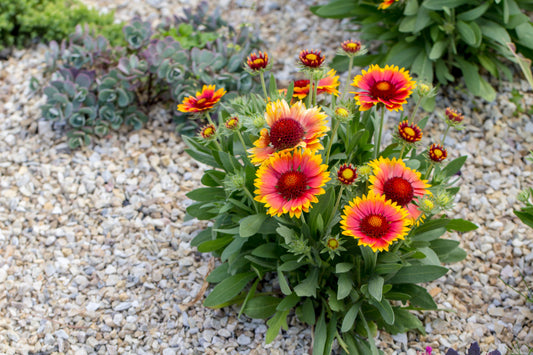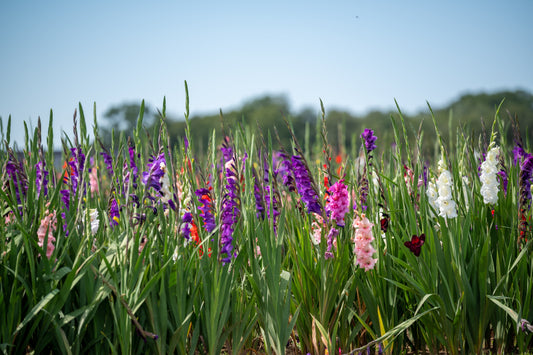Peppers Planting & Growing Guide
Planting Guide Information
-
Pre-Potted; At Soil LinePlanting Depth
-
18-24 in.Planting Proximity
-
SpringPlanting Season
-
A summer favorite with many culinary uses.Plant Benefits
-
ModerateWater Quantity
-
Species Dependent; Harvest when ready in SummerBloom Season
-
Full SunSunlight Quantity
-
Grow as AnnualHardiness Zones
Additional Growing Information
Where to Plant Peppers
Plant Peppers in full sun in well-draining soil. Although Peppers love a long, warm growing season, in really hot, dry climates, they will appreciate some afternoon shade.
When to Plant Peppers
Plant Peppers in the spring when the danger of frost has passed, and soil temperatures are regularly above 55℉.
How to Plant Peppers
- Find a location with full sun and well-draining soil. If you notice that water still puddles 5 to 6 hours after a hard rain, it's best to find a different spot or plant in a raised bed or container.
- Plant your Peppers as soon as possible after they arrive. If you can’t plant immediately, make sure to give them a drink of water and set them somewhere out of direct sun and wind until you can get them planted.
- Dig a hole the same depth as the nursery container. Remove the plant from the container and set in the hole. If the roots look compacted, it’s okay to gently loosen them a bit. Fill the hole with soil and tamp down firmly.
- Water thoroughly after planting to settle the soil around the roots.
How to Grow Peppers
- Water at least once a week, more often in warm weather; 1” of water at a time is a good estimate. Drip irrigation or soaker hoses help get the water right at the roots with minimal evaporation and reduce the spread of diseases like powdery mildew.
- Add a light mulch of compost to the surrounding soil to improve drainage, reduce evaporation, and keep competing weeds at bay.
- Apply a balanced fertilizer or fish emulsion solution after the plants are established but before they set blossoms. Apply a second feeding around mid-season.
Pepper Tips & Tricks
- Plant Peppers in containers or raised beds if your garden soil is slow to warm up in the spring.
- Lay down black plastic sheeting around the plants to keep the soil warm in milder climates. That extra heat can really help the roots develop.
- Provide stakes or cages to support plants that bear larger Peppers.
- Watch for signs of damage from pepper weevils, aphids, or other insects. Floating row covers can help keep pests away.
- Harvest sweet Peppers when they are green or fully colored. The flavor will develop more as the color changes.
- Harvest hot Peppers once they have fully ripened on the plant, with the exception of poblanos and jalapenos, which can be harvested when green. Peppers must be completely ripe if they are to be dried, or else they will rot.
- Remember that as members of the same plant family as tomatoes and potatoes, the leaves and stems are highly toxic, so only eat the Peppers!
From the Family
-
 25% Off
25% OffPepper Sweet Seed
1 pack of Pepper Sweet Bell seedsRegular price $2.99Sale price $2.99 Regular priceUnit price per$3.9525% Off -
 40% Off
40% OffPepper Hot Red Cayenne Seed
1 pack of Pepper Hot Cayenne Red seedsRegular price $2.99Sale price $2.99 Regular priceUnit price per$4.9540% Off -
 Sold out
Sold outPepper - Jalapeno 2 Pack
2 plants in quart potsRegular price $20.99Sale price $20.99 Regular priceUnit price per$2,995.95Sold out -
 Sold out
Sold outPepper - Shishito 2 Pack
2 Plants in Quart PotsRegular price $20.99Sale price $20.99 Regular priceUnit price per$29.95Sold out -
 Sold out
Sold outPepper - Lunchbox Mix (Mini) 2 Pack
2 Plants in Quart PotsRegular price $20.99Sale price $20.99 Regular priceUnit price per$29.95Sold out








